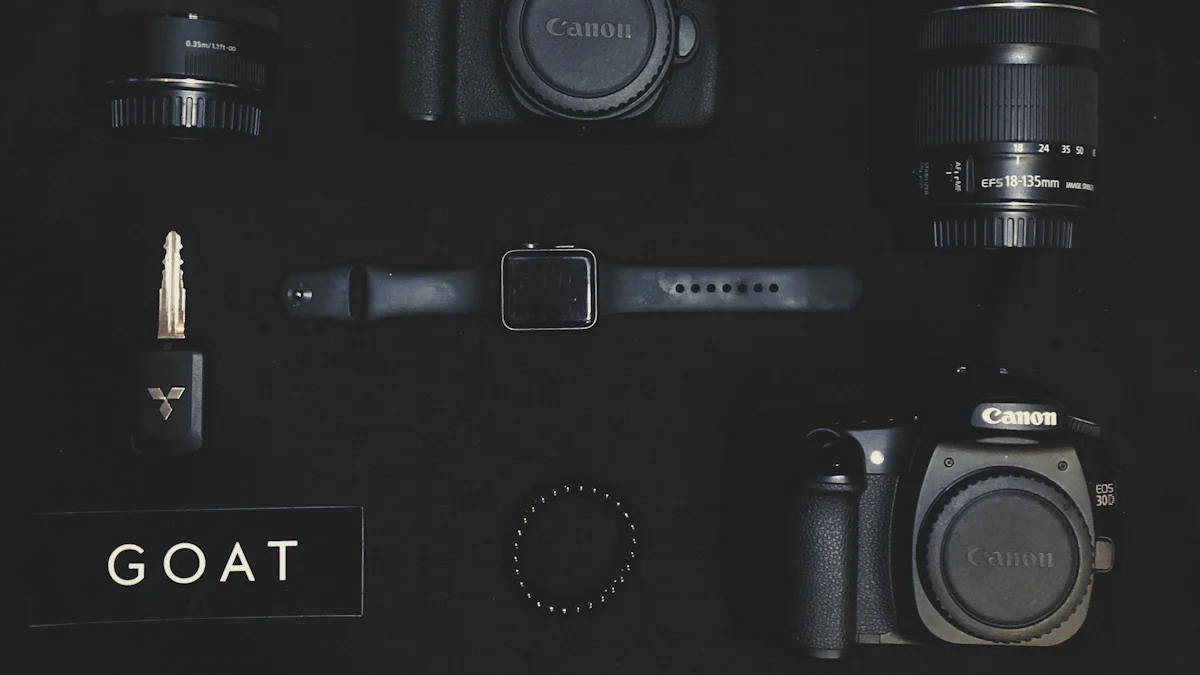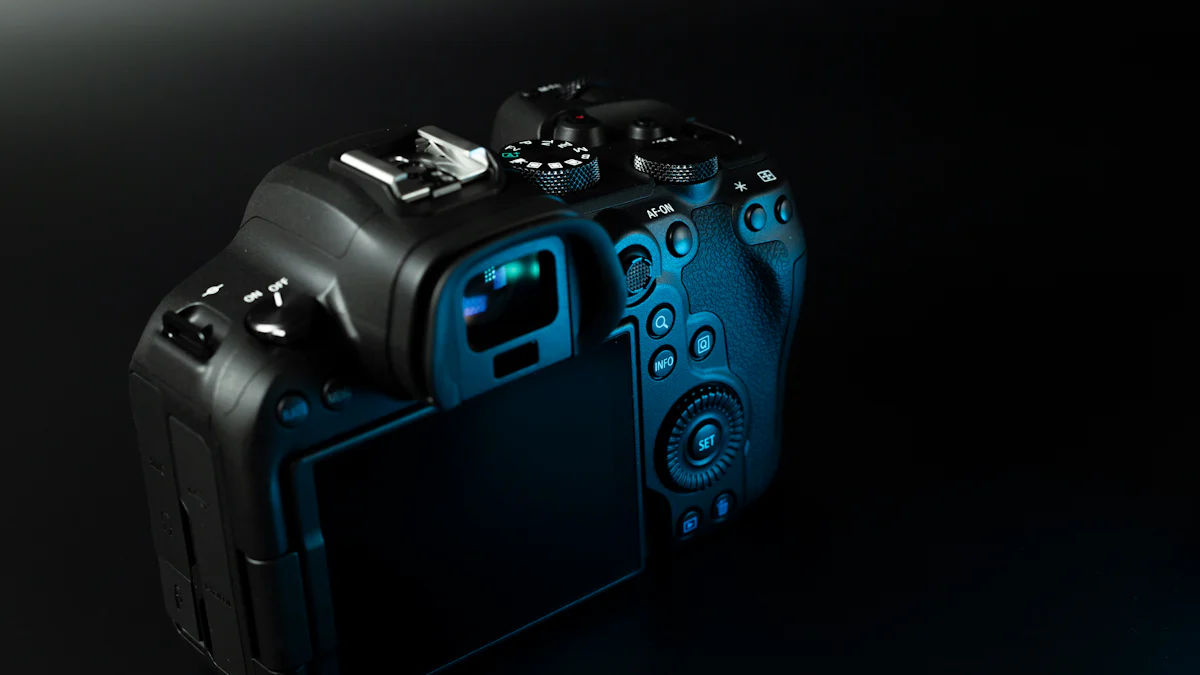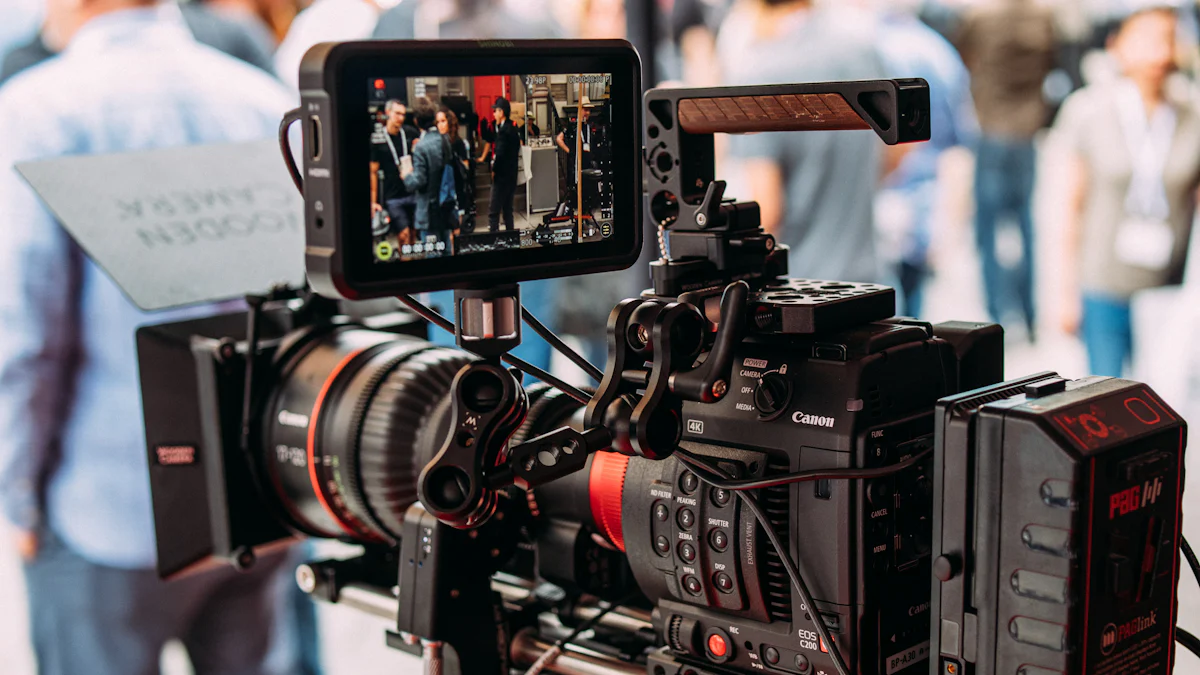Canon eos R1 vs Canon eos R5 II

Advanced Features Comparison
Canon eos R1 excels in speed and durability, while Canon eos R5 II offers high resolution and advanced video capabilities.
Features | Canon eos R1 | Canon eos R5 II |
|---|---|---|
Body Construction | Magnesium alloy body with integrated vertical grip | Strong build but not as ruggedized, lacks integrated grip |
Weather Sealing | Advanced weather-sealed body for superior resistance | Includes weather sealing but not as comprehensive |
Sensor Resolution | 24.2MP sensor for speed and efficiency | 45MP sensor for detailed images |
Autofocus System | Advanced Dual Pixel Intelligent AF system | Dual Pixel Intelligent AF system with fewer focus points |
Continuous Shooting Speed | 40 FPS continuous shooting rate | 30 FPS continuous shooting rate |
Video Recording | 6K RAW video recording, 4K-D, 4K-U, 2K-D, Full HD formats | 8K RAW at 59.94/50.00 fps, 4K120 slow-motion recording |
In-body Stabilization | Advanced in-body stabilization for smooth footage | Includes in-body stabilization for stable shots |
Wireless Connectivity | Built-in Bluetooth and Wi-Fi with latest 6GHz Wi-Fi | Supports 802.11ax Wi-Fi 6E and 6, covering 6, 5, and 2.4 GHz bands |
Battery Life | Impressive battery performance for long shoots | Delivers excellent battery life but slightly less than R1 |
Price and Value | Estimated retail price of $6,299.00 | Offers high-end performance at a lower cost |
Canon's mirrorless camera lineup continues to dominate the market, boasting a 46.5% share in 2023. Choosing the right camera for professional photography can significantly impact the quality of work. The Canon eos R1 vs Canon eos R5 II comparison aims to help photographers make an informed decision. Both models offer advanced features tailored for different professional needs. The EOS R1 excels in sports and wildlife photography with its 24.2MP sensor and fast read-out speeds. Meanwhile, the EOS R5 II stands out with a 45MP sensor and superior video capabilities.
Canon eos R1 vs Canon eos R5 II: Design and Build Quality

Body Construction
Material and Durability
The Canon eos R1 vs Canon eos R5 II comparison reveals distinct differences in material and durability. The Canon EOS R1 features a robust magnesium alloy body, providing exceptional strength and durability. This construction ensures the camera withstands harsh conditions, making it ideal for professional use. The Canon EOS R5 II also boasts a strong build, following the tradition of the 5D SLR series. However, the R5 II is not as ruggedized as the R1. The R1 includes an integrated vertical grip, enhancing its durability and handling.
Ergonomics and Handling
Ergonomics play a crucial role in the Canon eos R1 vs Canon eos R5 II debate. The Canon EOS R1 offers excellent ergonomics with its integrated vertical grip. This design provides a comfortable and secure hold, especially during extended shooting sessions. The Canon EOS R5 II, while also ergonomic, omits the integrated grip. This omission makes the R5 II slightly less comfortable for prolonged use. Both cameras feature intuitive button layouts, ensuring easy access to essential controls.
Weather Sealing
Resistance to Dust and Moisture
Weather sealing is another critical factor in the Canon eos R1 vs Canon eos R5 II comparison. The Canon EOS R1 excels with its advanced weather-sealed body. This design offers superior resistance to dust and moisture, ensuring reliable performance in challenging environments. The Canon EOS R5 II also includes weather sealing, providing protection against the elements. However, the R5 II's sealing is not as comprehensive as the R1's. This difference makes the R1 a better choice for outdoor and adventure photographers.
Weight and Portability
Weight and portability are essential considerations in the Canon eos R1 vs Canon eos R5 II analysis. The Canon EOS R1 weighs approximately 24 grams lighter than the R5 II. This slight difference enhances the R1's portability, making it easier to carry during long shoots. The Canon EOS R5 II, while slightly heavier, remains portable and convenient for most users. Both cameras support the Canon RF lens mount, offering compatibility with a wide range of lenses. This feature ensures flexibility and versatility for various photography needs.
Canon eos R1 vs Canon eos R5 II: Sensor and Image Quality
Sensor Type and Resolution
Megapixels Comparison
The Canon eos R1 vs Canon eos R5 II comparison highlights significant differences in megapixel count. The Canon EOS R1 features a 24.2MP sensor, designed for speed and efficiency. This sensor suits sports and wildlife photographers who need rapid image capture. On the other hand, the Canon EOS R5 Mark II boasts a 45MP sensor. This high-resolution sensor excels in capturing detailed images, making it ideal for landscape and studio photography.
Sensor Technology
Both cameras utilize advanced sensor technology. The Canon EOS R1 employs a back-illuminated stacked CMOS sensor. This design improves light sensitivity and reduces noise, enhancing image quality in low-light conditions. The Canon EOS R5 Mark II also features a back-illuminated stacked CMOS sensor. However, the R5 Mark II's sensor offers higher resolution, providing more detail in each shot. Both sensors support Dual Pixel AF, ensuring fast and accurate autofocus performance.
Image Processing
Processor Type
Image processing plays a crucial role in the Canon eos R1 vs Canon eos R5 II debate. The Canon EOS R1 uses a dual processing system. This system includes the DIGIC X processor and the new DIGIC Accelerator. This combination delivers exceptional speed and power, enabling rapid image capture and processing. The Canon EOS R5 Mark II also features the DIGIC X processor paired with the DIGIC Accelerator. This setup ensures high-speed performance and efficient handling of large image files.
Noise Reduction Capabilities
Noise reduction is essential for producing clean images. The Canon EOS R1 excels in this area with its Neural Network Noise Reduction. This technology minimizes noise while preserving detail, resulting in high-quality images even at high ISO settings. The Canon EOS R5 Mark II also offers excellent noise reduction. The high-resolution sensor and advanced processing system work together to deliver clear, detailed images with minimal noise.
Dynamic Range and Color Accuracy
Dynamic range and color accuracy are vital for professional photographers. The Canon EOS R1 provides impressive dynamic range, capturing a wide range of tones from shadows to highlights. This capability ensures detailed images with rich colors. The Canon EOS R5 Mark II also excels in dynamic range, thanks to its high-resolution sensor. This sensor captures intricate details and vibrant colors, making it ideal for various photography styles. Both cameras offer excellent color accuracy, ensuring true-to-life colors in every shot.
Canon eos R1 vs Canon eos R5 II: Autofocus and Performance
Autofocus System
Number of Focus Points
The Canon eos r1 vs canon eos r5 II comparison reveals significant differences in autofocus systems. The Canon EOS R1 features an advanced Dual Pixel Intelligent AF system. This system offers a high number of focus points, ensuring precise autofocus across the frame. The Canon EOS R5 Mark II also boasts the Dual Pixel Intelligent AF system. However, the R5 Mark II provides fewer focus points compared to the R1. Both cameras excel in tracking moving subjects, making them suitable for action photography.
Focus Speed and Accuracy
Focus speed and accuracy are crucial in the Canon cos R1 vs canon eos R5 II debate. The Canon EOS R1 delivers exceptional focus speed, thanks to the DIGIC X processor. This camera locks onto subjects quickly and maintains focus even in challenging conditions. The Canon EOS R5 Mark II also offers impressive focus speed and accuracy. The R5 Mark II's focus system can track subjects even when briefly obscured. Both cameras ensure sharp and clear images, regardless of the shooting scenario.
Continuous Shooting Speed
Frames Per Second (FPS)
Continuous shooting speed sets the Canon eos R1 vs Canon eos R5 II apart. The Canon EOS R1 can shoot at an incredible 40 FPS continuous shooting rate. This speed makes the R1 ideal for capturing fast-moving subjects in sports and wildlife photography. The Canon EOS R5 Mark II offers a slightly lower continuous shooting speed of 30 FPS. Although the R5 Mark II's speed is lower, it still provides excellent performance for most professional needs. Both cameras use electronic shutters to achieve these high speeds.
Buffer Capacity
Buffer capacity plays a vital role in the Canon eos R1 vs Canon cos R5 II analysis. The Canon EOS R1 features a large buffer capacity, allowing photographers to capture extended bursts without interruption. This capability ensures that users do not miss critical moments during high-speed shooting. The Canon EOS R5 Mark II also offers a substantial buffer capacity. However, the R5 Mark II's buffer is slightly smaller than the R1's. Both cameras handle large image files efficiently, thanks to the DIGIC X processor and DIGIC Accelerator.
Canon eos R1 vs Canon eos R5 II: Video Capabilities

Resolution and Frame Rates
4K and 8K Video Recording
The Canon eos R1 vs Canon eos R5 II comparison showcases significant differences in video resolution and frame rates. The Canon EOS R1 offers 6K RAW video recording, which provides excellent detail and dynamic range. This camera also supports 4K-D, 4K-U, 2K-D, and Full HD formats. These options make the EOS R1 versatile for various video production needs.
On the other hand, the Canon EOS R5 Mark II stands out with its ability to capture 8K RAW at 59.94/50.00 fps. This capability allows for incredibly detailed footage, suitable for high-end productions. The R5 Mark II also offers 4K120 slow-motion recording, with or without sound, and can go as high as 240fps at 2K/1080p quality. This flexibility makes the EOS R5 Mark II a powerful tool for videographers.
Video Features
In-body Stabilization
In-body stabilization is crucial for capturing smooth and stable footage. The Canon EOS R1 includes advanced in-body stabilization, which compensates for camera shake and movement. This feature ensures steady shots, even when shooting handheld or in dynamic environments.
The Canon EOS R5 Mark II also features in-body stabilization. This system works effectively to reduce motion blur and enhance video quality. Both cameras offer reliable stabilization, making them suitable for professional videography.
Log Profiles and Color Grading
Log profiles and color grading play a vital role in post-production. The Canon EOS R1 supports Canon Log 2 and 3, providing up to 16+ stops of dynamic range. These profiles allow for greater flexibility in color grading, enabling filmmakers to achieve their desired look.
The Canon EOS R5 Mark II also supports Canon Log 2 and 3. This camera includes additional pro video tools such as false color display mode and focus assist functions. These features enhance the overall video production process, making the EOS R5 Mark II a valuable asset for filmmakers.
Both cameras offer pre-continuous shooting for stills and pre-recording for videos. They provide ample industry-standard recording modes and options, including 4K DCI 60p SRAW recording. These capabilities ensure that both the Canon EOS R1 and Canon EOS R5 Mark II meet the demands of professional videographers.
Canon eos R1 vs Canon eos R5 II: Connectivity and Battery Life
Wireless and Wired Connectivity
Wi-Fi and Bluetooth
Connectivity plays a crucial role in modern cameras. The Canon EOS R1 offers built-in Bluetooth and Wi-Fi, including the latest 6GHz Wi-Fi. This feature allows for high-speed file sharing and FTP/FTPS transfer. The Canon EOS R5 Mark II also supports 802.11ax Wi-Fi 6E and 6, covering 6, 5, and 2.4 GHz bands. Both cameras connect easily to smartphones and networks, ensuring seamless data transfer.
USB and HDMI Ports
Wired connectivity options enhance the versatility of both models. The Canon EOS R1 features dual CFexpress card slots, providing ample storage and fast data transfer rates. The Canon EOS R5 Mark II includes a LAN port and GPS, expanding its connectivity capabilities. Both cameras offer USB and HDMI ports, allowing users to connect to various devices for file transfer and external monitoring.
Battery Performance
Battery Life Comparison
Battery life is a vital consideration for photographers. The Canon EOS R1 boasts impressive battery performance, ensuring long shooting sessions without frequent recharging. The Canon EOS R5 Mark II also delivers excellent battery life, although slightly less than the R1. Both cameras support extended use, making them reliable choices for professional work.
Charging Options
Charging options add convenience for users. The Canon EOS R1 supports multiple charging methods, including USB charging and external battery packs. The Canon EOS R5 Mark II offers similar flexibility with various charging options. Both models ensure that photographers can keep their cameras powered up, even during extended shoots.
Canon eos R1 vs Canon eos R5 II: Price and Value for Money
Initial Cost
Price Comparison
When considering the Canon EOS R1 and Canon EOS R5 Mark II, price plays a significant role. The Canon EOS R1 comes with an estimated retail price of $6,299.00. This price reflects the advanced features and robust build quality. On the other hand, the Canon EOS R5 Mark II offers a more affordable option. The EOS R5 Mark II provides high-end performance at a lower cost. This makes the R5 Mark II an attractive choice for many professionals.
Long-term Investment
Resale Value
Resale value is crucial when investing in high-end cameras. The Canon EOS R1 holds its value well over time. Professional photographers often seek out the EOS R1 for its durability and performance. The Canon EOS R5 Mark II also maintains a strong resale value. The high-resolution sensor and advanced video capabilities make the R5 Mark II desirable in the used market. Both models ensure that users can recoup a significant portion of their investment.
Future-proofing
Future-proofing is essential in the fast-evolving world of camera technology. The Canon EOS R1 offers features that will remain relevant for years. The 24.2MP full-frame stacked CMOS sensor and dual CFexpress card slots ensure longevity. The Canon EOS R5 Mark II also excels in future-proofing. The 45MP full-frame stacked CMOS sensor and 8K video recording capabilities set a high standard. Both cameras support the latest Canon RF USM Lens lineup, ensuring compatibility with future lenses.
Choosing between the Canon EOS R1 and Canon EOS R5 Mark II depends on specific needs. The EOS R1 suits those who prioritize durability and speed. The EOS R5 Mark II appeals to those seeking high resolution and advanced video features. Both models offer excellent value for money, making them worthy investments for professional photographers.
The Canon EOS R1 and Canon EOS R5 Mark II both offer exceptional features tailored for different professional needs. The EOS R1 excels in sports and wildlife photography with its 24.2MP full-frame back-illuminated stacked CMOS sensor and 40fps shooting speed. The EOS R5 Mark II stands out with a 45MP sensor, 8K video recording, and advanced video features.
For professional photographers focusing on speed and durability, the Canon EOS R1 is the ideal choice. For those prioritizing high resolution and superior video capabilities, the Canon EOS R5 Mark II offers better value. Both models ensure excellent performance, making them worthy investments.
See Also
Selecting the Optimal Caliber for a Successful Elk Hunt